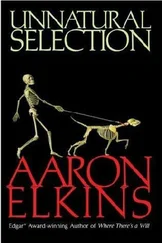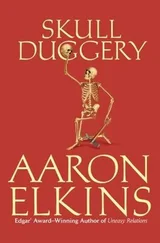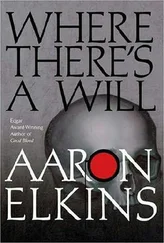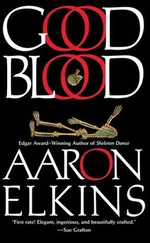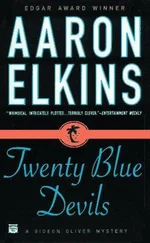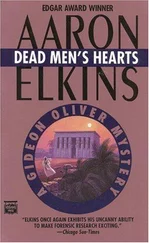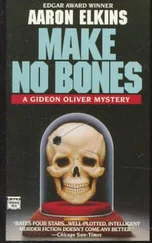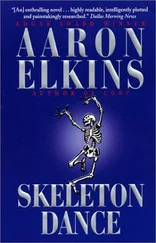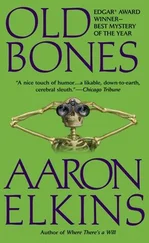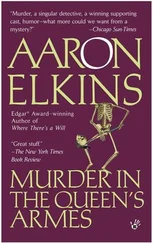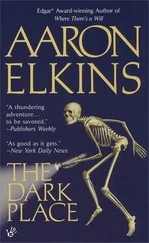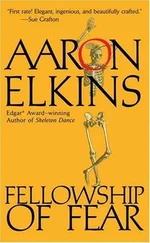“Oh yeah,” John said airily to Rocco, “this is exactly what he’s always like.” And to Gideon: “Okay, Doc, don’t you think you’ve boggled the minds of us poor dumb coppers long enough? I mean, I know it’s one of your few pleasures, but how about just getting to the point of it and stop beating around the bush? We’re getting lost here.”
Rocco agreed. “Yeah, screw the underlying premises. How about just coming out and telling us what your ensuing deductions are?”
“Right,” John chipped in. “Get to the part that knocks our socks off.”
Gideon flopped into a chair, suddenly tired. “All right, here’s the punch line: Pietro Cubbiddu didn’t kill his wife. Or himself.”
“Well, you were kind of thinking along those lines before, weren’t you?” John said.
“Yes, but now there isn’t any ‘along those lines.’” He looked at Rocco. “I know that Pietro Cubbiddu didn’t kill his wife. He couldn’t have. There’s no longer any doubt about it. I think you’re going to want to reopen the case, Rocco.”
Rocco wasn’t pleased. He went back into his scowl. “And you ‘know’ this how?”
Gideon sighed. “You people are so untrustful. I know it because, at the time Nola was killed, Pietro was already dead. Long dead.”
“Long dead,” John repeated. “What does that mean? Hours, days . . . ?”
Gideon shook his head. “What I said before: weeks.”
“Weeks!” Rocco shouted. Now he was confused as well as unhappy. “How the hell can that be?” He was close to being angry as well. “How do you know that? What, from these stupid gnaw marks?”
Gideon drank down the rest of his latte before answering. “No, not from the gnaw marks. From the fracture patterns of the bones.”
“The fracture patterns of the . . .” Rocco dropped heavily into the chair beside Gideon and appealed to John. “He’s wearing me out. What the hell is he talking about now, do you know?”
John hunched his shoulders. “I don’t have a clue.” He looked at Gideon. “Doc?”
“The fracture patterning,” Gideon said. “That’s one of those underlying premises I was referring to.”
“Well, on second thought, maybe you ought to go back to establishing them, after all.”
“I would, John, but if I recall correctly, this gentleman from the Carabinieri advised—with some considerable heat, I might add—that I screw them.” The shot of caffeine in his system was already perking him up.
Rocco closed his eyes. “I’m gonna kill him,” he muttered, but he was laughing. John had already been laughing for a while, and now Gideon joined in too. “Okay,” he said, slapping his thighs and getting up, “come on, I’ll show you what I’m talking about.”
When the three of them stood over the bones, Gideon said, “We have a really strange situation here.”
“No kidding,” John said.
“No, this is one I’ve never run into before. Or anything close. All right, first a little general background on bones.”
“The underlying premises,” Rocco said, nodding.
“The underlying premises of the underlying premises,” Gideon corrected, and went on before they could comment.
“Living bone,” he explained, “is a very different thing than dead bone. The first is infused with fluid and grease and covered with moist tissue, something like a bark-covered branch on a living tree. The second is dried out, like a dead twig that’s been on the ground for a long time. The result is that they tend to fracture in different ways. For example, when a fresh bone—a living leg bone, say—is subjected to extreme pressure, it doesn’t just break: it bends. It’s actually flexible to some extent. So it’s more resistant to breaking, and when it does break, there’s a good chance it will splinter but stay in one piece, like a living branch—which is why that kind of break is called a green-stick fracture. But dead bone—like the dead twig—is no longer flexible. Try to bend it, and it just snaps into two pieces. Or three or four or five.”
“Like these,” John said, surveying the shattered bones on the table. “Clean breaks, almost all of them. But with Nola, a lot of them were those . . . what was it, green-twig fractures.”
“Green-stick,” Gideon said. “Right. Conclusion: unlike Nola, who was alive—whose bones were still moist, living tissue when she went off that cliff—”
“Alive and conscious ,” Rocco added.
“—Pietro was already dead. And not only dead, but thoroughly dead. Long enough for his bones to start to dry out.”
“But what about these?” John asked, indicating a couple of ribs that had clear green-stick fractures, and two similar ones in the sacrum.
“Well, that’s why I said ‘long enough for his bones to start to dry out.’ It doesn’t happen all at once. And as to which ones dry first and which don’t, there are a million variables. In the case of these green-stick ones—the sacrum, the eleventh and twelfth ribs—they’re all in the body’s core, the area most thickly covered with fat and muscle and other tissue—clothing too—so they’d stay moist longer and be protected from drying. The other bones would dry out faster. So the same fall could very well have produced dry-stick fractures in some of the bones and green-stick fractures in others. Which is exactly what I think happened.”
“Hey, Doc, let me ask you something else,” John said. “When you say he had to have been dead long enough for the bones to start drying out, how long would that be?
Gideon sighed. “Maybe one of you ought to write this down. What we’re talking about here are weeks .”
Rocco’s expression was pained. “Oh, please . . .”
“Weeks,” repeated Gideon. “Look, he left home for his cabin on, what was it, September first, right?”
Rocco nodded.
“Okay, so we know he was definitely alive then. And we’re assuming that the two of them got thrown off the cliff a month later, on October 1, when she came to pick him up.”
“It’s a pretty safe assumption,” Rocco said. “She left her aunt’s that morning, but she didn’t show up—neither of them showed up—at Villa Antica that afternoon.”
Gideon nodded. “Well, I tell you, how long it takes for human bone to dry out is extremely variable. It depends on temperature, humidity, the health of the victim, what he was wearing—”
“Here we go again,” said John.
“No,” Gideon said firmly. “Here we do not go again. I will say—and I’m willing to go on the record with this—that Pietro Cubbiddu had to have been dead a minimum of two weeks, and most likely more, when he was shot and his body thrown off that cliff. And my guess—which I’m not quite willing to go on the record with—is that it had to have been closer to four weeks than to two. In other words, not very long after he arrived at the cabin, sometime in that first week or so of September.”
“Which would have made it kind of hard for him to kill Nola in October,” John observed with a baffled frown.
No one said anything for a few seconds, and then Rocco asked: “So exactly what the hell do we think did happen?”
“Don’t look at me,” John said with a shake of his head. “I’m more lost than I was before he started.”
“I don’t have an answer to that either,” said Gideon, “but it does seem to me there are some pretty interesting threads you can pull out of the circumstances as we now understand them, Rocco. However it worked—and whatever was behind it—the killer had to be there waiting when Nola arrived, to make it look as if Pietro killed her.”
“Which means he had to know when she was coming,” John said. “The exact day she’d show up at the cabin. Which must mean we’re not talking about a whole hell of a lot of people. I mean, how many people would know something like that?”
Читать дальше

